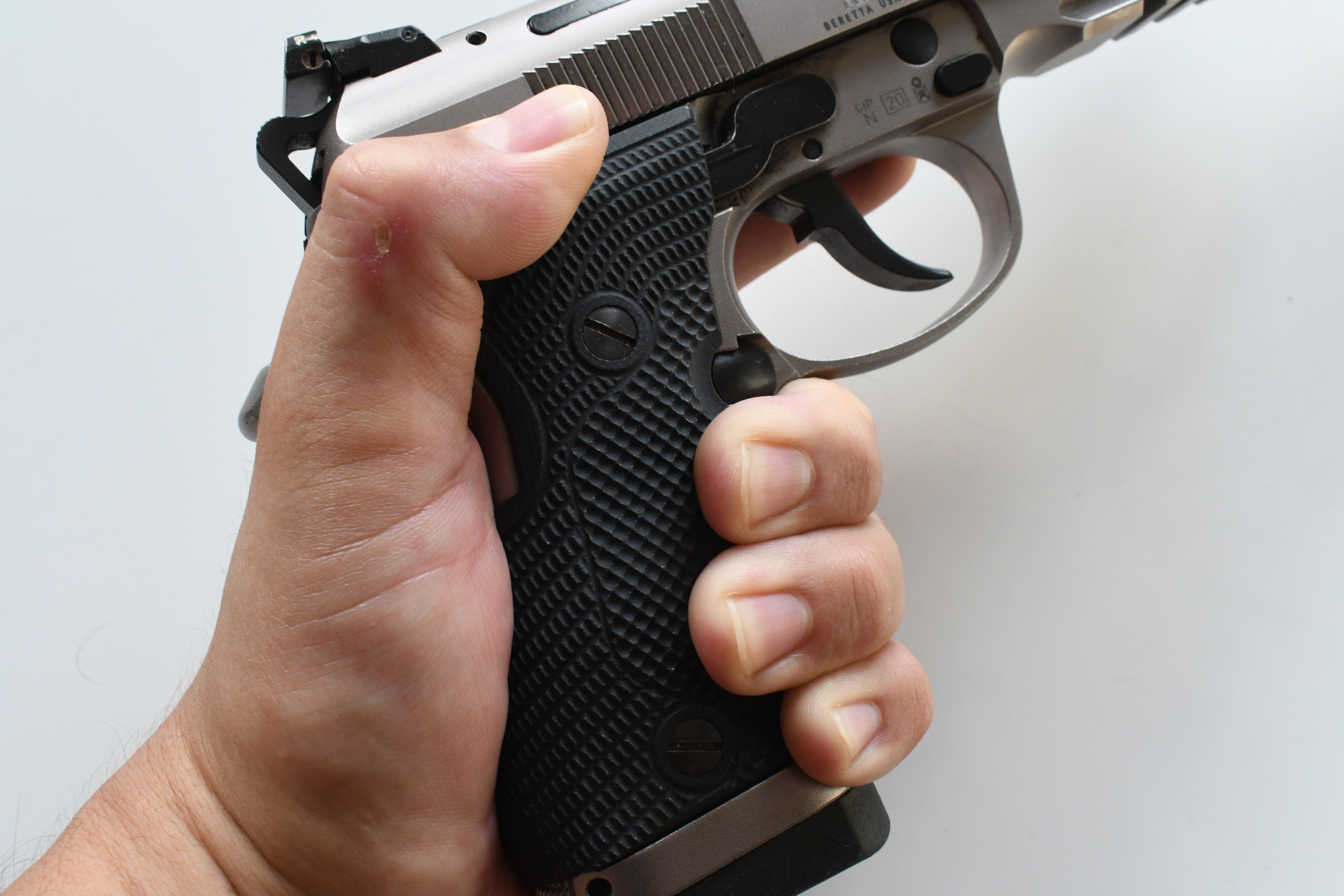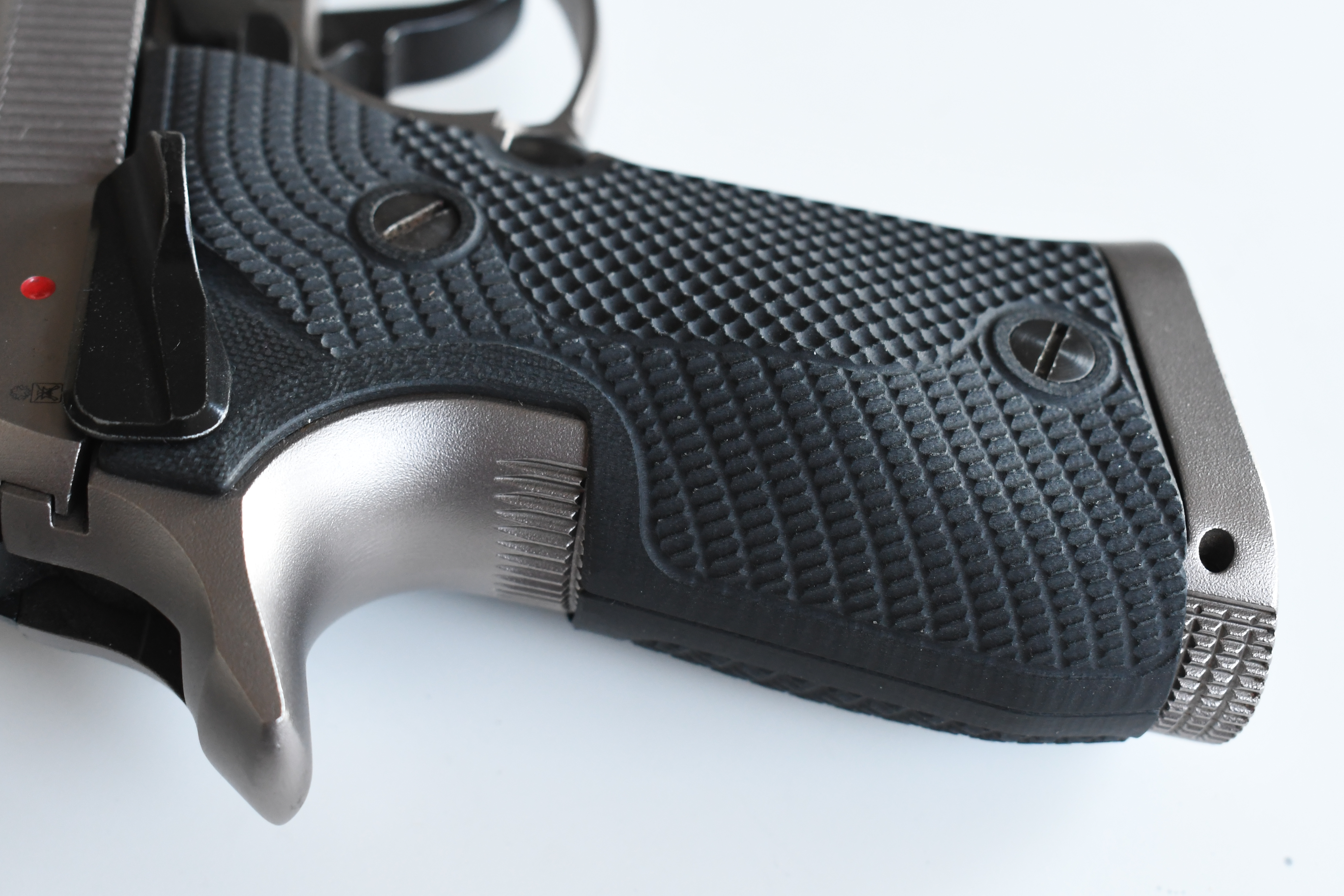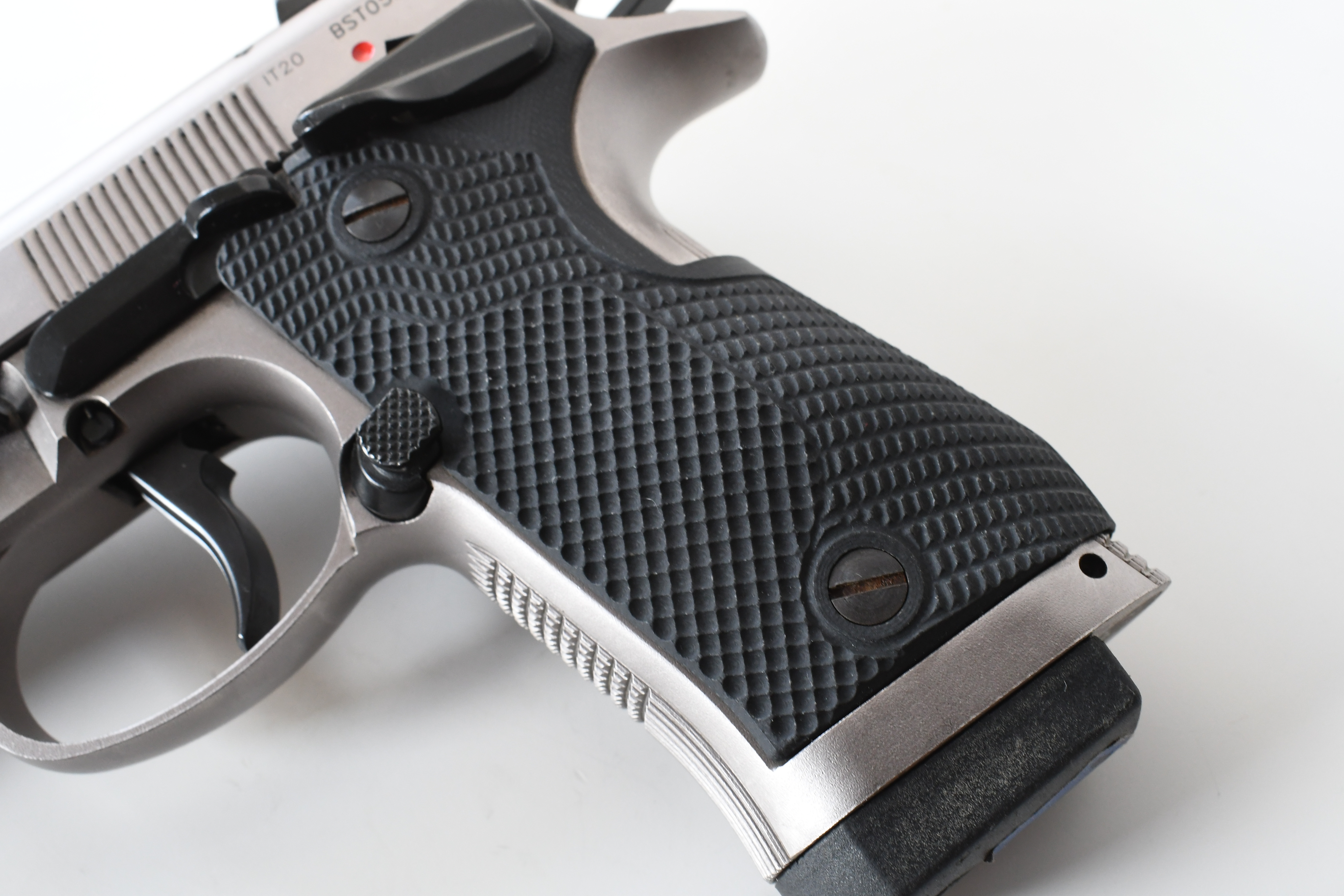How To Improve The Ergonomics Of The Beretta 92X Performance With LOK Grips.

Despite a rocky start, the Beretta 92X Performance is a fine sporting pistol based on one of the most reliable and proven hammer-fired locking-block 9mm semi-automatic actions ever devised. The Beretta 92X Performance’s design arguably possesses a propensity for accuracy, while its very agreeable single-action trigger can make it quite competitive against top-tier striker-fired or SAO competition pistols. In spite of that, the 92X Performance’s default Vertec grip can hamper the pistol’s true potential due to the way it fits in regular-sized hands. Sure, anyone who purchases a 92X Performance also receives a plastic wrap-around grip with a prosthetic “hump” that’s supposed to simulate the original Beretta 92’s curved backstrap. But its profile hardly comes close in mimicking the curvature of the original Beretta 92 grip.
The Beretta 92 Grip And Vertec Challenges?

Even as a dyed-in-the-wool Beretta enthusiast, I’ve been less than enthused with my “normal-sized” hands and the Vertec grip on the 92X Performance pistol. A pistol’s grip and feel in the hand counts for a lot, especially with regards to top-level shooting performance.
First, some context: All Beretta 92 pistols were designed around a TDA (traditional double action) trigger scheme, so frames have always had oversized trigger guards to accommodate for the hinged trigger’s arc of rotation needed to actuate the external trigger bar’s complete travel length when firing in double-action. It’s much the same reason why double-action revolvers also have curved trigger guards. A certain amount of mechanical leverage is simply needed to fire in double-action, so the trigger must sit in a position that provides enough clearance for the trigger to actuate the double-action linkage but also remain in a place where the trigger finger can reasonably reach it. This is why trigger guards are oversize on virtually all Beretta 92 pistols. It’s to provide the clearance needed for double-action shooting, and also to accomodate gloved trigger fingers. After all, it was designed as a duty gun. However, this larger trigger guard crowds the frontstrap of the frame which reduces frontstrap’s “free” length. As a result, the distance from a Beretta 92’s trigger guard to bottom edge of the fronstrap is shorter and is more dimensionally similar to that of compact pistols like the Glock 19 or the CZ Shadow 2 Compact. To clarify, due to the space needed for the double-action trigger to hinge properly, the trigger guard takes up more space on the 92’s frame and the shooter is left with less real-estate on the frontstrap which directly affects the way their firing-hand interfaces with the pistol. In short, these full-size guns with full-size frames handle like compact-framed pistols in this regard.
Traditionally, the “crowdedness” of the frontstrap issue is alleviated by the strategically placed rear curve on the bottom of the backstrap. Much like the curved mainspring housing on a 1911, that curvature shifts how a Beretta sits in the hand and somewhat “relieves” the other three fingers of the firing hand from being cramped too tightly and too closely. The Vertec profile completely removes this gentle rear hump from the backstrap and as a result, it affects how the pistol sits in the palm in very subtle ways that I think are less ideal for shooters with normal or larger sized hands.
I’ve fired over 50% of the lifetime round count in my personally-owned Beretta 92X Performance in its stock Vertec configuration. Again, with normal-sized hands, I can technically shoot the gun just fine, but it’s not ideal. For example, I have a tendency to develop a “Glock knuckle” callus on my middle finger when shooting my 92X Performance over extended periods of time (even when compared to my other traditional Beretta 92s, like my M-9 or Wilson Combat 92 Brigadier Tactical). The calloused knuckle results from the omission of that rear hump on the bottom of the backstrap which increases pressure where the fingers and trigger guard meet. Less material on the Vertec style grip also means less surface area for my hands to grip the pistol firmly which can lead to less control during rapid-shooting. It’s like trying to run a footrace with sneakers that don’t fit optimally; they reduce efficiency. While Beretta did include an extra wrap-around grip with the 92X Performance, I found it to be a stop-gap solution. The hump sits slightly higher than ideal and the plastic material, which is identical to the material the factory Vertec grip panels are made from, lacks enough grit for a competition-focused handgun.
The Fix: LOK Veloce Wraparound Grips

Short of an alchemist and a machinist magically re-contouring the Beretta 92X Performance frame, LOK Grips Beretta wrap-around Veloce grips are probably the best solution in “restoring” the 92X Performance to the proper and curvier original Beretta 92 grip profile. Shooters can opt for a set of these grips with either the classic Beretta 92 profile and in fairness, they also offer a gip set that simulates the contour of the spare “full” grip that ships from the factory with all 92X Performance pistols. Besides the choice , be it the “classic” or the “92XP style”, shooters can also choose stocks with fully symmetrical palm swells, swells biased to one side only or symmetrical thinner grips.
With my understanding of handgun grip ergonomics and the fact that oval shapes are most beneficial for modern two-handed shooting grips, the set of LOK Veloce Wraparound grips for my 92X Performance has both the classic Beretta 92 profile to alleviate the shifting pressure of the Vertec frame the fully symmetrical palm swells. These palm swells not only provide more surface area for gripping the gun overall, but they do a nice job of filling in space between the pistol and the palm with an improved and grippier texture that far exceeds either of the factory grips. Finally, because the palm swells have an oval shaped profile that tapers at the bottom, it is easier to apply “pinky-pressure” on the lowest part of the grip during shooting. “Pinky pressure” is somewhat en vogue these days amongst certain red-dot shooting schools of thought, but that doesn’t matter. The ability to control a pistol at its lowest point can help any shooter to track their sights in recoil, so I consider this tapering of the bottom to be critical and it’s something I look for in a grip, regardless of make or model.
LOK Grips Installation

Installing the LOK Veloce Wraparound Grips is easy. They take the Beretta’s 92X Performance existing grip screws and snap snugly in place. They’re manufactured precisely enough that they fit seamlessly together with the aid of a small metal dowel pin. Once installed, the LOK Veloce Wraparound Grips give the 92X Performance a completely new feel, as if it were another entirely different gun.
The Takeaway
While the Beretta Vertec grip profile may work with shooters of smaller hand size, the removal of the original Beretta 92’s curvature means that the gun will interact differently in the hands of a shooter who has standard or larger sized hands by shifting pressure points to the top front junction between the middle finger and the frame. There’s also the practical issue that comes with a pistol grip reduction: reduced real-estate needed to establish contact and control with the pistol itself. For shooters with larger hands, the LOK Veloce Wraparound Grips rectify the Vertec issues by not only restoring the backstrap’s curvature as close as possible to the original 92 grip, but also accentuate the grip by giving the shooter the option to include palm swells and a more robust LOK Veloce style texturing.
